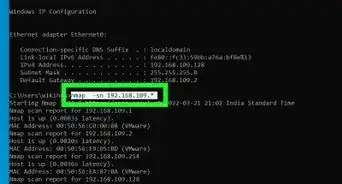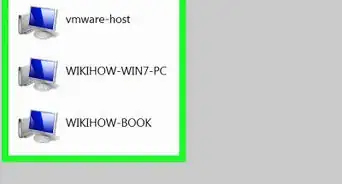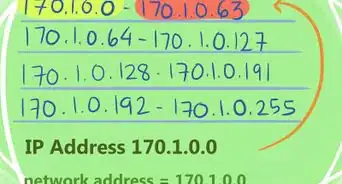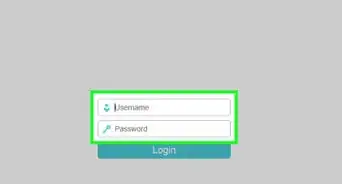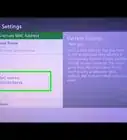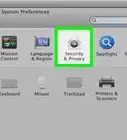This article was co-authored by Mitch Harris. Mitch Harris is a Consumer Technology Expert based in the San Francisco Bay Area. Mitch runs his own IT Consulting company called Mitch the Geek, helping individuals and businesses with home office technology, data security, remote support, and cybersecurity compliance. Mitch earned a BS in Psychology, English, and Physics and graduated Cum Laude from Northern Arizona University.
This article has been viewed 236,750 times.
An intranet is similar to the Internet in that it is a collection of documents that are connected via hyperlinks. However, the documents on an intranet are private and often only accessible by a computer on a local area network (LAN) or via the Internet with the appropriate login and password information.To make an intranet you need a network, server, and content that is relevant to your organization.
Steps
-
1Create a local area network (LAN) in your home or office. This involves connecting computers, printers, modems, and other devices.
- To create a LAN, you should have at least 2 computers.
- Use network interface cards (NICs) to build the connection for your LAN. NICs are hardware that you can insert into the motherboards of your computers to add ports that will allow you to establish your network.
- Insert a crossover cable into the ports of the network interface cards. This cable allows your computers to communicate. Connect modems, printers and other devices to the computers to complete your network.
-
2Choose a web server.
- Look at the cost, performance, and reliability of the different web servers you consider.
- Consider using a personal web server if you are setting up a home intranet. A personal web server is software that you can download on a personal computer to make an intranet at home.
Advertisement -
3Install a web browser.
- Your intranet pages can only be viewed if you have a web browser installed on the network computers.
-
4Design your intranet.
- Make decisions about the look and feel of your intranet and the content that you will upload. If you are a company creating an intranet, you may choose to hire a web designer or select a team from your management pool to design your intranet.
- Decide what type of information you want to include on your intranet. Some common options include an organizational chart, a staff directory, wiki pages, a calendar, frequently used and shared documents, and a message board.
- Draw out the sequence of your intranet pages on paper, including the homepage and the order of the pages as you want them presented in the menu on your intranet site.
- Design a menu representing the major pages on your intranet. The menu should appear on each page to allow users to navigate from page to page and back to the homepage. Make sure the menu links to all of your pages.
-
5Decide how you will handle security.
- Determine if all or part of the intranet you create should be password protected and if staff will be able to access the company's intranet via the Internet when they are away from the office.
- If you are creating an intranet at home, decide which family members will have access.
-
6Determine how often you will back-up your intranet as protection against viruses and server failure.
-
7Maintain your intranet and protect it against viruses and corrupt files.
- Upload antiviral software to your network that will scan the system for viruses. Antiviral software will also download periodic updates to protect your intranet from new viruses.
-
8Market your intranet to staff company-wide.
- Encourage use of your new intranet by making some processes completely electronic, such as recording hours worked, requesting vacation time, and annual benefits enrollment. Offer training for the company's new intranet as part of your marketing strategy.
Expert Q&A
-
QuestionWhat is a good alternative to using an intranet?
 Mitch HarrisMitch Harris is a Consumer Technology Expert based in the San Francisco Bay Area. Mitch runs his own IT Consulting company called Mitch the Geek, helping individuals and businesses with home office technology, data security, remote support, and cybersecurity compliance. Mitch earned a BS in Psychology, English, and Physics and graduated Cum Laude from Northern Arizona University.
Mitch HarrisMitch Harris is a Consumer Technology Expert based in the San Francisco Bay Area. Mitch runs his own IT Consulting company called Mitch the Geek, helping individuals and businesses with home office technology, data security, remote support, and cybersecurity compliance. Mitch earned a BS in Psychology, English, and Physics and graduated Cum Laude from Northern Arizona University.
Consumer Technology Expert If you just want file sharing, a lot of people tend to prefer cloud options. OneDrive offers Team Site and SharePoint which are basically intranet tools if you want to have an internal website, internal address books, and so on.
If you just want file sharing, a lot of people tend to prefer cloud options. OneDrive offers Team Site and SharePoint which are basically intranet tools if you want to have an internal website, internal address books, and so on. -
QuestionWill I notice any benefit worth the cost of installing a 10 GB fiber optic backbone to the network?
 sysprogCommunity AnswerThat depends on multiple factors. First, look at each part of each path in the network, from source to sink, and identify the effective bandwidth of each functional subunit; if you have a 1 GB channel in a path, it will choke the traffic accordingly, regardless of how much faster the paths connected to it may be. If everything else is running at 10 GB, and the backbone is an overloaded 5 GB bottleneck, improving its speed will increase throughout. Whether the resulting benefit should be viewed as worth the cost depends on the results of a full cost-benefit analysis; quantitatively that requires rigor, and qualitatively it requires insightful assessments.
sysprogCommunity AnswerThat depends on multiple factors. First, look at each part of each path in the network, from source to sink, and identify the effective bandwidth of each functional subunit; if you have a 1 GB channel in a path, it will choke the traffic accordingly, regardless of how much faster the paths connected to it may be. If everything else is running at 10 GB, and the backbone is an overloaded 5 GB bottleneck, improving its speed will increase throughout. Whether the resulting benefit should be viewed as worth the cost depends on the results of a full cost-benefit analysis; quantitatively that requires rigor, and qualitatively it requires insightful assessments. -
QuestionHow can I solve the problem of multiple access not saving on the network?
 sysprogCommunity AnswerMore specifics regarding the scenario are required for a reasonable answer, like what kind of network you have, whether you're talking about consecutive or concurrent multiple access, what is meant by saving or not saving, etc.
sysprogCommunity AnswerMore specifics regarding the scenario are required for a reasonable answer, like what kind of network you have, whether you're talking about consecutive or concurrent multiple access, what is meant by saving or not saving, etc.
Things You'll Need
- Local area network (LAN)
- Web server
- Web browser
- Intranet design
- Storage for backing-up server
- Virus security software
- Documents, forms and other content
- Web designer
- Marketing plan





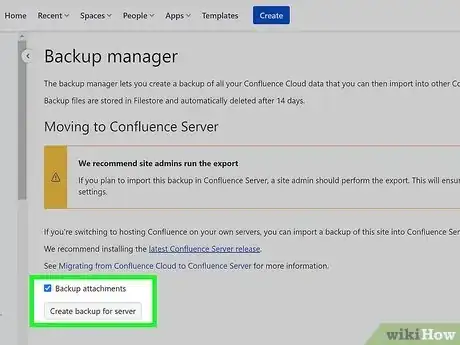


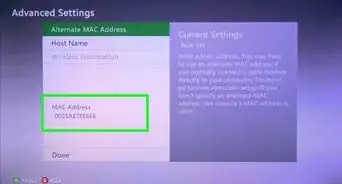



-Step-26-Version-2.webp)
